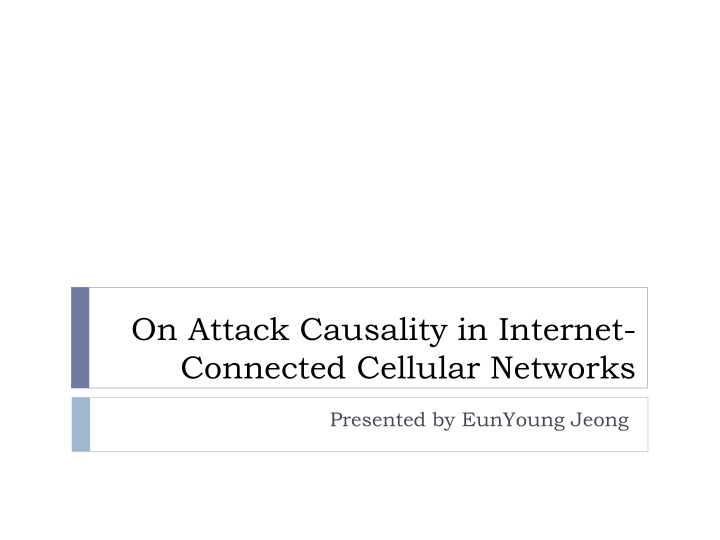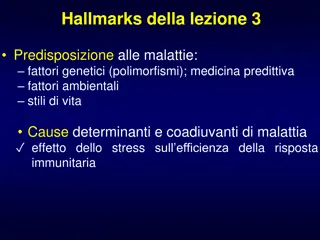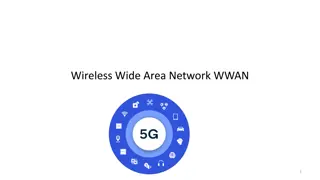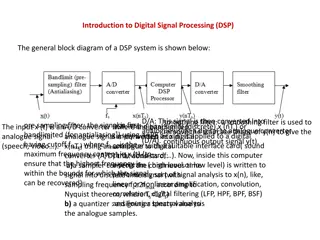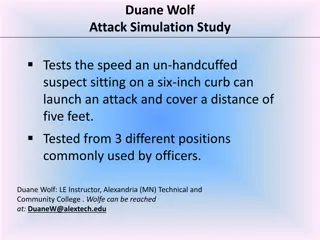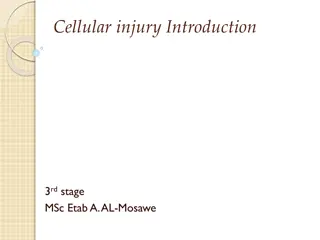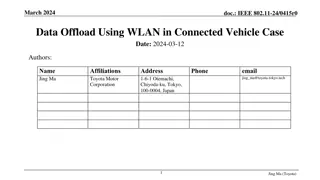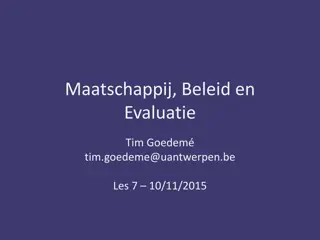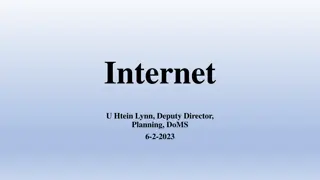On Attack Causality in Internet- Connected Cellular Networks
Delve into the world of Internet-connected cellular networks, exploring the evolution from 2G GSM to GPRS/EDGE architecture. Learn about authentication, packet arrival, device statuses, paging procedures, packet multiplexing, and GPRS channel structures.
Download Presentation

Please find below an Image/Link to download the presentation.
The content on the website is provided AS IS for your information and personal use only. It may not be sold, licensed, or shared on other websites without obtaining consent from the author.If you encounter any issues during the download, it is possible that the publisher has removed the file from their server.
You are allowed to download the files provided on this website for personal or commercial use, subject to the condition that they are used lawfully. All files are the property of their respective owners.
The content on the website is provided AS IS for your information and personal use only. It may not be sold, licensed, or shared on other websites without obtaining consent from the author.
E N D
Presentation Transcript
On Attack Causality in Internet- Connected Cellular Networks Presented by EunYoung Jeong
Whats new? 2G GSM Only voice call, SMS service 2.5G GSM GPRS: General Packet Radio Service Introduce data service on GSM network. Enables mobile devices to be connected to the Internet. Divide CCH (Control Channel) of GSM network to provide data delivery. Control signal, SMS, and data service over CCH 2
Authentication/Registration Home Location Register: User location, availability, services GPRS attach Packet Data Protocol (PDP) context: IP address, billing, After PDP context setup, mobile device can exchange packets. 4
Receiving device status To save power, mobile devices are not constantly listening for incoming packets. States of devices Paging Request GPRS detach IDLE READY STANDBY GPRS attach READY expire STANDBY expire 6
Packet Arrival Paging request 8
Paging Procedure Packet Paging Request Packet Paging Channel (PPCH) Packet Channel Response Packet Random Access Channel (PRACH) Packet Resource Assignment Packet Access Grant Channel (PAGCH) Packet Paging Response Packet Associated Control Channel (PACCH) Packet Data Transfer Packet Data Traffic Channels (PDTCHs) 9
Packet Multiplexing GPRS multiplex multiple traffic flows to serve large number of users on a single physical channel concurrently. 8 time slots -> a frame 52 frames -> multiframe 10
GPRS Channel Structure PPCH PDTCH 11
Optimizations As paging is expensive, paging for every packet is impossible. Paging a device takes over 5 seconds. End devices continue listening to PDTCH for a number of seconds before returning to STANDBY. Typically 5 seconds (same as paging overhead) For this, GPRS differentiates packets at the MAC layer by Temporary Block flows (TBFs) and they are identified by 5-bit Temporary Flow IDs (TFIs). 12
Exploiting Connection Teardown TFIs are implemented as 5-bit fields. There can be maximum 32 concurrent flows for each sector. If an adversary send a message to a phone once every 5 seconds before returning to STANDBY, the targeted device maintains its TFI. An adversary can block legitimate flows by sending 32 messages to each sector every 5 seconds. 13
Exploiting Connection Teardown (Cont.) 55 sectors on Manhattan 32 messages for each sector 41 bytes for each packet (TCP/IP header + 1 byte) Every 5 second An adversary can deny service with only 110 Kbps traffic. 14
Exploiting Connection Setup PRACH (or RACH) channel is shared by all hosts attempting to establish connection. Slotted-ALOHA protocol is used to minimize contention. The maximum theoretical utilization is 0.368. Potential system bottleneck. Given a large number of paging requests, RACH becomes very busy. Many of connection requests may fail. It blocks voice connection as well as data connection. 15
Teardown Attack Simulation Target Manhattan cellular data service Exhaust TFIs of data service with malicious traffic Legitimate traffic Modeled as Poisson random process Voice calls: 50,000 per hour (120 seconds duration) Data calls: 20,000 per hour (10 seconds duration) Attack flows Modeled by Poisson random process 100 - 200 Kbps 16
Teardown Attack At 200 Kbps At rate > 160 Kbps, the cellular data service within Manhattan is virtually nonexistent. Voice channel is not affected. (separate use of channel) 17
Setup Attack Simulation Target Manhattan cellular voice and data service Exhaust RACH channel that is shared by voice and data Legitimate traffic Modeled as Poisson random process Voice calls: 50,000 per hour (120 seconds duration) Data calls: 20,000 per hour (10 seconds duration) Attack flows Modeled by Poisson random process 2200 4950 Kbps 18
Teardown Attack At 4950 Kbps Both voice and data flows experience blocking on the RACH. The dual use of control channel allows interference. 19
Possible Mitigation Adding more range of TFI values 32 concurrent flow/sector is requisite concession. Increasing it will degrade individual connectivity. Adding more bandwidth High cost of connection establishment is same. Effect of adding bandwidth is limited. 20
Failure of Bandwidth Channel throughput is saturated! 21
Possible Mitigation (Cont.) Adding more channels Decrease individual throughput. Increase contention to RACH. 22
Connecting the Dots The concept of connection Data networks Connection unaware Simply forward packet for connection Cellular networks Lack of power and computation in end devices Page, wake and negotiate for connection Amplifying a single incoming packet to expensive connection mechanism is the source of the attacks. 23
Clash of Design Philosophies Data network Built on the end-to-end principle. Applications do not expect nothing other than best effort delivery. Cellular data network Still fundamentally circuit-switched systems Specialized to mobile devices and ensures a device is ready to receive. Rigidity from specialized network Unable to adapt to meet changing requirements and conditions When conditions change, the rigidity causes break. 24
For Robust Cellular Data Network The move to larger flow pool or shorter paging Mitigation possible for this work Eventual security? As long as there is difference in delivering packet, exploitable mechanisms will exist. Can we just forward packet? Eliminating needs for paging Smarter end devices Location-awareness Power problem Shorter sleep cycle More computation 25
Conclusion They find two new vulnerabilities to demonstrate that low bandwidth DoS attacks can block legitimate cellular traffic. These attacks are from not mismatch of bandwidth rather from different network topology smart and dumb . Rigidity fails to adapt changing conditions. Without fundamental change in cellular data network design, the low-bandwidth exploits are not easy to be solved. 26
Questions 27
Garbage 28
Introduction The interconnection of cellular networks and the Internet Significant expand of the services on telecommunications subscribers New vulnerabilities from conflicting design philosophies Cellular networks Smart, controlled The Internet Dumb, best effort service None have examined the inherent security issues caused by the connection of two systems built on opposing design tenets. 29
Vulnerabilities To new vulnerabilities that can deny cellular data services and voice services. Exploiting Connection Teardown Exploiting Connection Setup These attacks target connection teardown and setup procedures in networks implementing General Packet Radio Service (GPRS). 30
